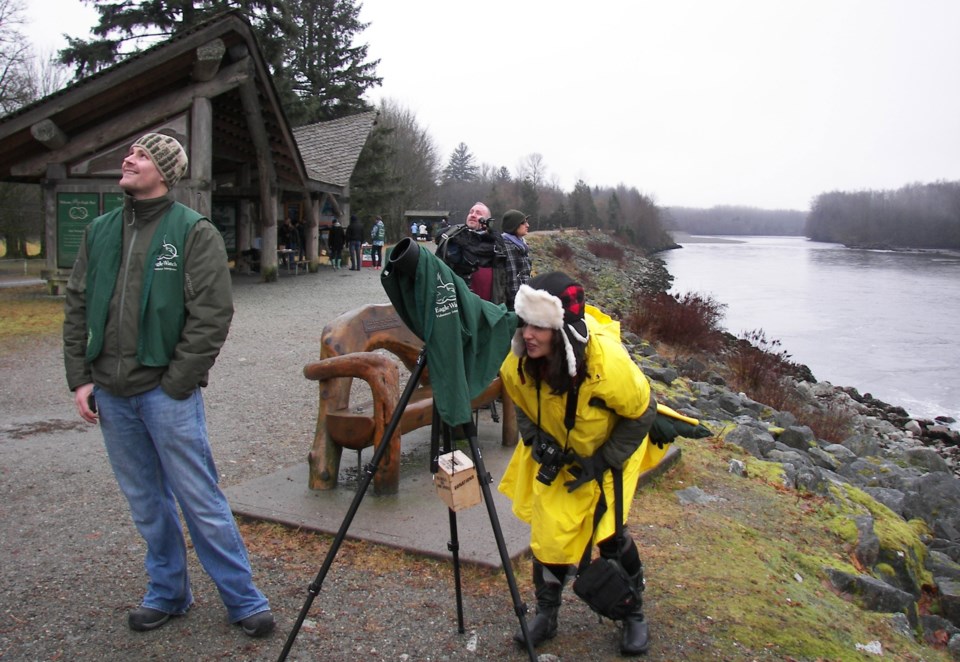The Squamish Nation and BC Parks signed a landmark agreement this week.
The agreement covers lands in and around the EstŽ-tiwilh/Sigurd Creek Conservancy area, Brackendale Eagles Park and Tantalus Park.
The agreement affects about 13,000 hectares of land.
Much of the land covered by the agreement was already protected, but according to Squamish Nation Chief Gibby Jacob, this new agreement brings a few previously unprotected areas into a conservation plan.
A signing ceremony was held at the Totem Hall in Squamish on Thursday (Feb. 16).
Squamish eagle advocate Thor Froslev was at the signing with about 50 other people, mostly from the Squamish Nation and B.C. Parks.
Froslev said the agreement confirms that the Squamish Nation can use the protected lands for traditional activities like hunting and fishing.
"This is an important day for our people and we are proud to have worked with the Province of B.C. to protect these important and sacred sites," said Squamish Nation Chief Gibby Jacob. "This work builds on the vision of the Squamish People to develop the Xay Temi?xw Ð Sacred Lands land use plan that protects our territories and Wild Spirit Places."
Work on the agreement dates back to 2007 when the Squamish Nation and BC Parks agreed to work collaboratively in the Squamish Nation traditional territory.
A Conservancy Management Plan was created for EstŽ-tiwilh/Sigurd Creek as part of the Sea to Sky Land and Resource Management Plan, which was completed in 2008. The EstŽ-tiwilh Wild Spirit Place is located on the west side of the Squamish River between the Ashlu and Elaho watersheds.
Brackendale Eagles Park includes Baynes Island, which is located in the Squamish River.
The provincial park on the west side of the Squamish River is primarily a conservation area and serves as key winter habitat for eagles that come to the area to feed on spawning salmon. Campfires, camping, trail development, mountain biking, horseback riding and many other activities are banned. Fishing and rafting are two permitted park uses.
Environment Minister Terry Lake said the creation of the agreement came about through "the work of a very committed group of people."




